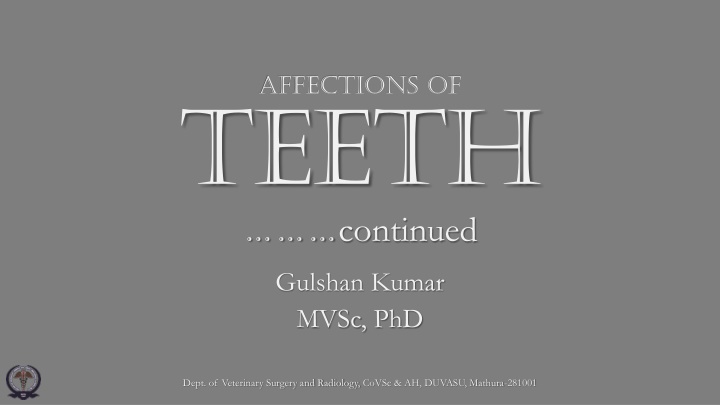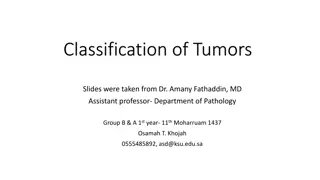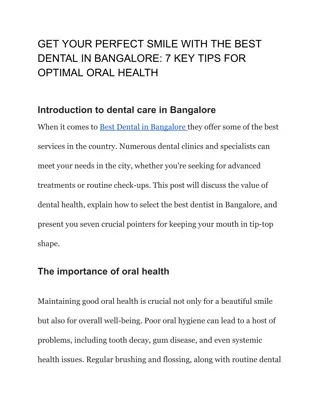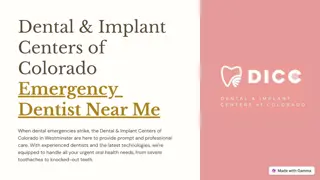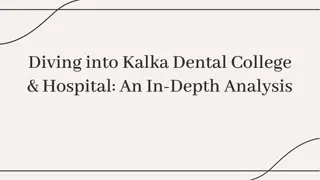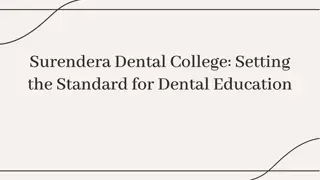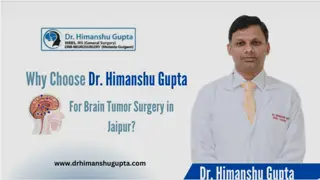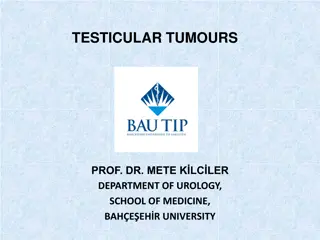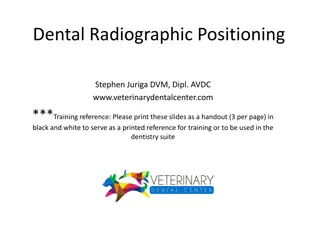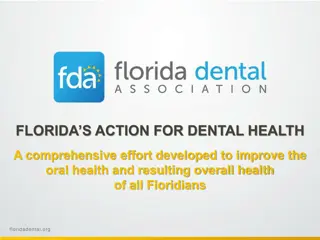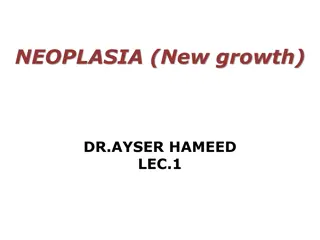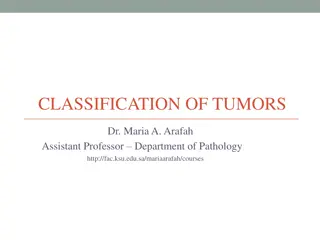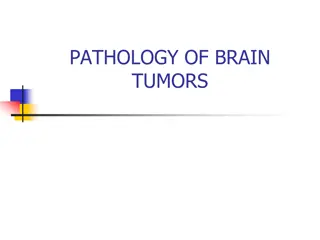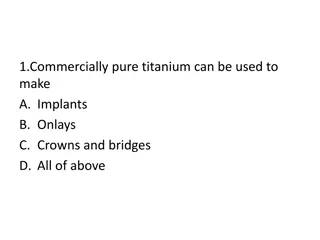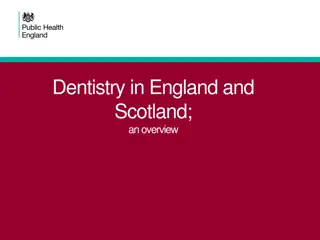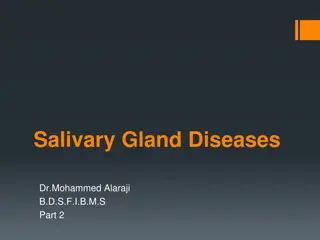Veterinary Dental Conditions and Tumors: A Comprehensive Overview
This detailed information covers various dental affections and tumors in veterinary medicine, discussing conditions like dental fistula, odontoma, ameloblastoma, and epulis. It provides insights into the causes, characteristics, and classifications of these oral health issues, offering valuable knowledge for veterinary professionals and students.
Download Presentation

Please find below an Image/Link to download the presentation.
The content on the website is provided AS IS for your information and personal use only. It may not be sold, licensed, or shared on other websites without obtaining consent from the author.If you encounter any issues during the download, it is possible that the publisher has removed the file from their server.
You are allowed to download the files provided on this website for personal or commercial use, subject to the condition that they are used lawfully. All files are the property of their respective owners.
The content on the website is provided AS IS for your information and personal use only. It may not be sold, licensed, or shared on other websites without obtaining consent from the author.
E N D
Presentation Transcript
Affections of Teeth continued Gulshan Kumar MVSc, PhD Dept. of Veterinary Surgery and Radiology, CoVSc & AH, DUVASU, Mathura-281001
Dental fistula Abuts on the root of the tooth tiology: Alveolar periostitis or dental abscessation Trauma Dept. of Veterinary Surgery and Radiology, CoVSc & AH, DUVASU, Mathura-281001
Tumours of gums and alveoli Odontoma Benign odontogenic tumour in which both the epithelial and mesenchymal cells are well differentiated resulting in the formation of all dental tissue types. A hamartoma rather than a neoplasm. Compound odontoma: tooth-like structures are present indicating advanced cellular differentiation (radiographically, variable number of tooth-like structures-denticles.) Complex odontoma: the conglomerate of dental tissues bears no resemblance to a tooth ( radiographically, a sharply defined mass of calcified material surrounded by a narrow radiolucent band.) May be associated with un-erupted teeth, a dentigerous cyst, or may be attached to an otherwise normal tooth. The term ameloblastic odontoma is occasionally encountered in the veterinary literature. An ameloblastic odontoma is an ameloblastoma with focal differentiation into an odontoma Dept. of Veterinary Surgery and Radiology, CoVSc & AH, DUVASU, Mathura-281001
Compound odontoma Complex odontoma Dept. of Veterinary Surgery and Radiology, CoVSc & AH, DUVASU, Mathura-281001
Tumours of gums and alveoli Ameloblastoma: most common odontogenic tumors, occasionally incorrectly referred to as adamantinoma. Occur in young animals. Usually a locally invasive neoplasm with osteolysis around the tooth roots and cystic changes. Has a follicular arrangement of ameloblasts and stellate reticulum cells, resembling the basic structure of the enamel organ. In the dog, often characterized by focal keratinization. Metastasis has not been described. Dept. of Veterinary Surgery and Radiology, CoVSc & AH, DUVASU, Mathura-281001
Dept. of Veterinary Surgery and Radiology, CoVSc & AH, DUVASU, Mathura-281001
Tumours of gums and alveoli Epulis: Hyper-reactive fibrous granuloma (Gum boil) of the gum arising from periodontal ligament. Mainly 3 types: Fibromatous -less aggressive. Ossifying epulides -less aggressive. Acanthomatous is most aggressive. Dept. of Veterinary Surgery and Radiology, CoVSc & AH, DUVASU, Mathura-281001
Dept. of Veterinary Surgery and Radiology, CoVSc & AH, DUVASU, Mathura-281001
Bishoping: Normally the infundibular mark disappears from the central incisors by 6 yrs. And from corner incisors by 8 yrs. Bishoping is attempting to make an old mouth look younger, as follows: The teeth are filed short and level, a false infundibularmark is gouged out of the centre of the table and blackened with caustic to lessen the years. The trick may be detected by : closing the mouth, when the teeth will not meet naturally; by observing the absence of the enamel rim to the false mark and errors of its shape due to slips of the gouge; occasionally the traces of the rasp or file used to shorten the teeth are in evidence.. Dept. of Veterinary Surgery and Radiology, CoVSc & AH, DUVASU, Mathura-281001
